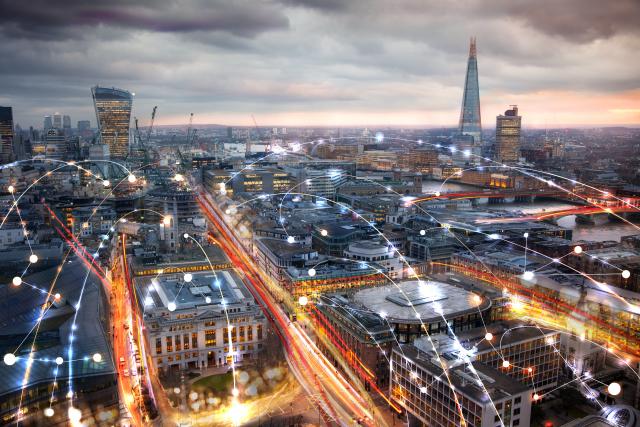The Change in the Retail Landscape
This past decade retail has undergone a transformational change. Mobile technology and the Internet, as both a tool and a channel, have completely disrupted the retail industry. At the same time, populations have been concentrating in cities, driving growth and creating both challenges and opportunities as cities design urban logistics ecosystems that revolve around mobility. With many of the traditional market differentiators flattened, urban retailers can exploit these mobility improvements to develop an agile operating structure that will help win market share and maximise profits.
In the past few years, we’ve seen many physical retailers incorporating cross channel fulfilment solutions like buy online pick-up in store, adding in store customer service technology, increasing personal shopping services, and acquiring online brands to expand their in-store customer base. Large urban retailers are now making even bolder moves toward increasing their flexibility, ensuring they are poised to adapt quickly to changes in consumer preferences. These retailers are focusing their resources on delivering an excellent customer service experience while moving quickly to stay current with customer preferences by reducing in store inventory and decreasing their physical footprint.
While online retailers have agility built in, and are able to shift their product mix in a matter of minutes as consumer appetites change, that level of speed often isn’t possible for bricks and mortar retailers. There are ways retailers can increase agility however, in order to gain a competitive edge in today’s dynamic market. This model of competitive agility, defined by adaptability and consumer services, is the edge that drives customers to city shops. Bricks and mortar retailers of any size can gain this competitive agility through the following methods:
Ensure inventory efficiency through innovative logistics strategies
For most physical retailers, accessibility is still a key differentiator from online retailers, and having the product available for purchase is key. Today’s urban retailers have increased options for maintaining inventory. They are able to move inventory quickly and efficiently between intracity locations, harnessing today’s alternative urban transportation and logistics infrastructure through the use of innovative technology and planning. This allows them to combine purchases at all of their city locations to turn over inventory much more rapidly.
With this increase in intracity mobility, retailers can also reduce their overall cost of inventory, as they no longer need to maintain sufficient stock in any one location to meet projected customer demand. If a customer enters one store and wishes to buy a product that is available at another location within the city, the retailer can have it delivered quickly to the store or to a location of the customer’s choosing. By utilising a scalable logistics plan, customised to work within the city’s urban logistics ecosystem, the retailer is able to reduce the amount of product held in each store and can more rapidly turn over their product mix to meet consumer demand.
Ensure excellence throughout each transaction
The way a retailer interacts with customers plays a key role in their success. Customer service has become the hallmark of a successful physical retailer. Bricks and mortar retailers are focusing a greater percentage of resources on value added services ranging from personal shoppers and makeover stations, to adding phone chargers in dressing rooms, equipping salespersons with tablets to assist customers with product information, and providing in-store refreshments.
 Source: Getty Images
Source: Getty Images
One urban retailer is implementing a pilot program with a 3,000 square foot location dedicated solely to service. Personal stylists are on hand to assist customers with designing outfits through a style board IPad application. The customer can then pick out items through the app, which are retrieved from other stores throughout the city for the customer to try on. The store also provides tailoring, an in store bar, and manicure station.
While that level of service may not be attainable for all retailers, one aspect of excellence that they can focus on now is their last mile delivery process. This often-overlooked aspect of a transaction is a prime way for many physical retailers to differentiate themselves. By adding precise delivery as a part of their product mix, where the customer can designate the time and place for a delivery or return, these retailers can ensure customer service excellence from the moment the customer enters their location, until the product is delivered into their hands.
Differentiate your brand through insight and adaptation
In today’s market, many products have become commoditised as customers purchase them from multiple sources. The real differentiator is the overall experience with which those products are fulfilled. Mobile technology and the Internet make it much easier for retailers to track consumer habits and gain the insights needed to adapt their service offerings and events to meet customer expectations. Adding online offerings, loyalty programs and services that require customers to provide their contact information allows retailers to track and understand the habits of their customers in the same way as online retailers. They can send notice of in store events, drive traffic to other retail channels and ensure customer satisfaction through online feedback. This also gives them the insights needed to maintain inventory that is on the leading edge of fashion.
Bricks and mortar retailers can increase their competitive agility without significant risk by making strategic, iterative changes. By reducing their investment in physical inventory and changing their logistics strategy to one more suited toward harnessing the increased mobility of an urban logistics infrastructure, retailers can increase agility and reduce overhead cost. This allows them to focus resources on providing an agile process from first contact to delivery, creating a seamless experience that results in increased market share and overall net profit.




